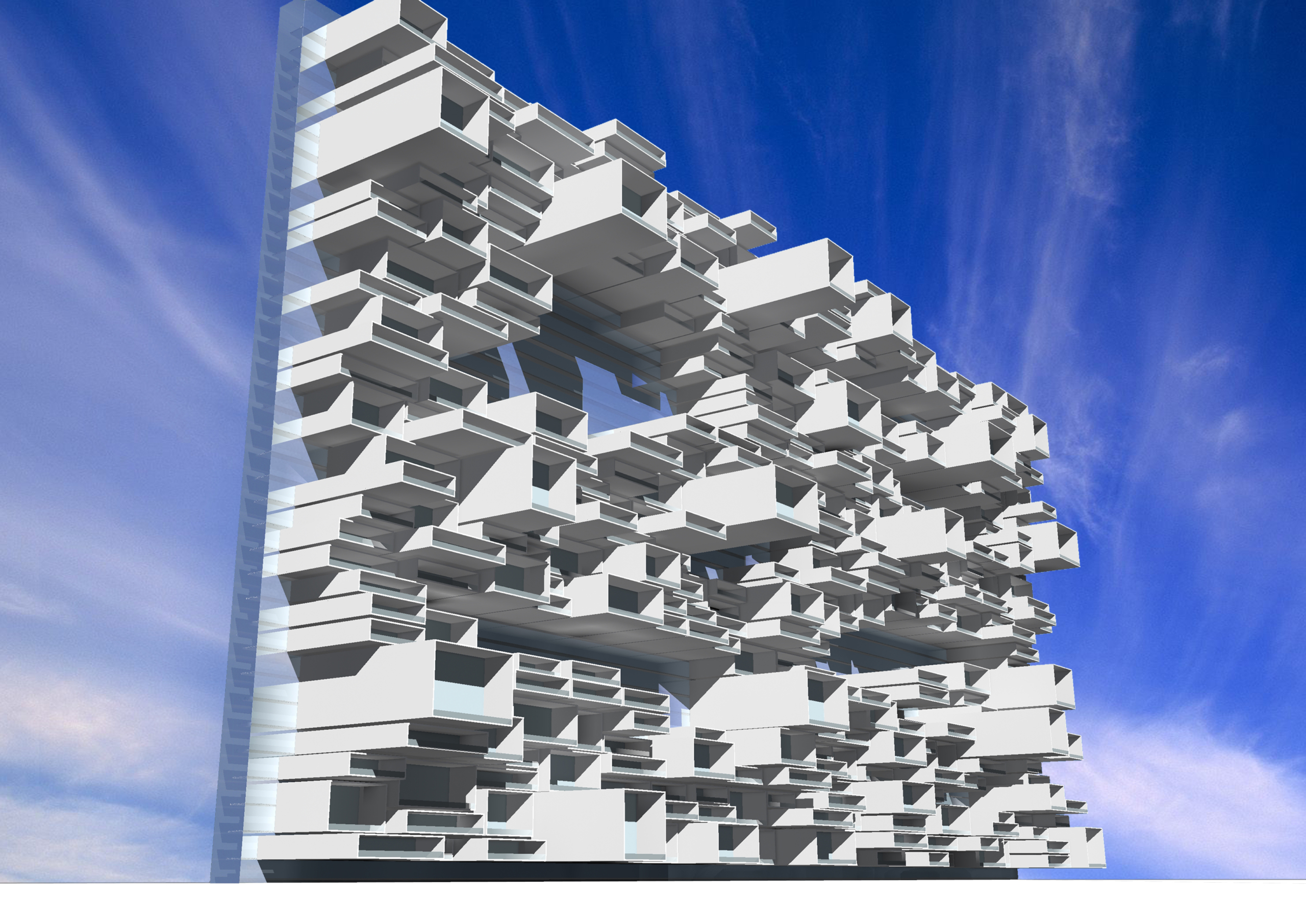Habitat-Field does not represent a static condition, but a variable condition of inhabitation – an infrastructure for life in flux. The building is not formed as an object within the landscape;
it is itself an artificial landscape, a “constructed ground” invented vertically. A vertical horizon that rejects linearity and predictability.
Its structure is composed of a repetitive system of cells, volumes, and recesses that obey no apparent order. Their logic is not typological but dynamic: they form as possibilities of inhabitation, as spatial propositions that shift, condense, recede, and reorganize. The whole does not impose form but provokes experience. There is no shell, but a field. No façade, but a phenomenon.
The outer layer, the transparent membrane that surrounds the main volume, functions as a sensory filter. A material boundary that blurs the separation between inside and outside, allowing light, reflection, and movement to penetrate the experience of dwelling. Behind this seemingly homogeneous surface, an “anarchy of order” emerges: volumes that intrude into voids, voids that generate new levels, repetitive sequences that never repeat the same way.

The logic of Habitat-Field is evolutionary, heterogeneous, playful. Like an “architectural algorithm,” the composition is generated not according to how it should be, but how it could be otherwise. Within this framework, architecture is not form but possibility. Not imposition but offering. Not a building, but a promise of experience.
The shell is not enclosed by façades or scenographies—it is a system. Each unit, each volume, each projection, each gap, is a potential microcosm. The structure is never complete, but prescribes a constant potential for recomposition. It is an open system: it can expand, be modified, collapse, and be rebuilt. The concept of permanent inhabitation is undermined by an architecture that proposes ephemeral relationships that exist only as long as they are in use.
Inhabitation here is not proposed as protection or stability, but as an event. Habitat-Field is not made to shelter, but to activate.
It does not provide answers but poses questions: What does personal space mean? Where does the private begin and where does the collective end? How can an architectural structure produce freedom rather than control?


